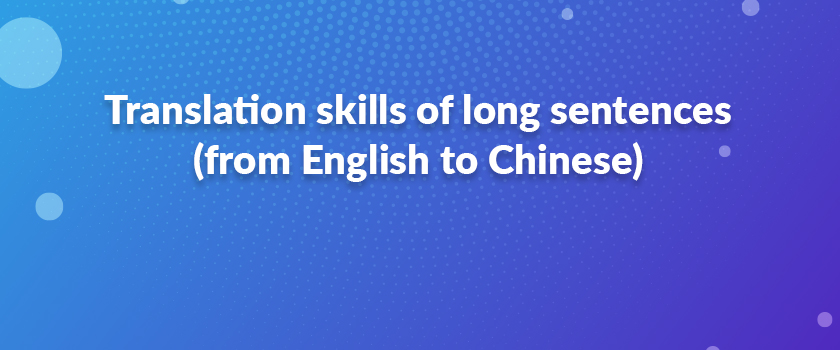When we are doing translations from English to Chinese, we often meet the situation that English sentences are often long, while Chinese sentences are relatively short. This brings us difficulties in translation works, namely we need to change the form of sentences, making them what they should be.
For example, checking out this English sentence:
The idea of a fish being able to generate electricity strong enough to light small bulbs and even to run an electric motor is almost unbelievable.
Twenty-six words being connected together with no breaks formed this long English sentence. While, its counterpart in Chinese are like this:
鱼能发电,其强度足以点亮小灯泡,甚至能开动马达,这简直是令人难以置信的。
We can see that it has been transformed into four parts with punctuation marks divided. Why? The two sentences are expressing the same meaning but in different language. In fact, it is just because of the habit of using. Through a long history of cultural antecedents, each language has developed its own features. English features hypotaxis while Chinese is characterized by parataxis. So, we have to pay attention to this difference and applied it in the translation, making the translated sentences getting on its own right way.
How do we translate a long English sentence into an authentic Chinese sentence? From above, we can know that an English sentence often combined several kinds of meaning units by conjunctions, prepositions, antecedents, etc. And, it often features a complicated sentence structures by nested one main clause with one or more subordinate clauses. So the principal for us to translation a long English sentence into a Chinese sentence is that: analysis first, and then translate. It is a way just like “peeling layers of bamboo”, to get known each meaning unit of the whole sentence layer by layer.
Steps should be taken in translation of long sentences:
Firstly, to analyze the basic structure of the original English sentence, to get a general understanding its grammatical structure. Is it a simple sentence, compound sentence, or complex sentence? Which one is the main clause and which are the subordinate ones?
Secondly, to find out the semantic structure of the sentence, what is the core meaning and meanings of each structure layer? What is the meaning of a predicate structure, a non-predicate verb, prepositional phrase?
Thirdly, to gain a clear idea of logic relations between the main ingredients and the modifiers, such as a cause and effect relations or the time order. What kind of a subordinate clause is it? What is the purpose of this adverbial modifier? Where is an antecedent and which one does it modify? Whether there is a parenthesis and which one does it connect with?
Read Also: Translation in Mechanics from English to Chinese
Fourthly, to translate by using different methods, like linear translation, inverse translation, splitting-off method, sequence changing method, interpolation method, reorganization method, division method, and so on.
By the way, there are various kinds of long sentence translations methods. Being a good translator, you need to learn each one and practice as much as possible so as to improve your translation skills. Overall, in a long sentence translation from English to Chinese, you need to either adjust the sequence or adjust the length of the sentence.
Besides, what is also very important is that do not have a fear psychology when translating a long English sentence. No matter how long and complicated, it is just formed by some basic elements. The only thing you need to do is to follow we are talking above and practice it as much as you can. The success is only a matter of time.
Take a look at how we helped our client by localizing their project for English language. Click here to read the complete case study



